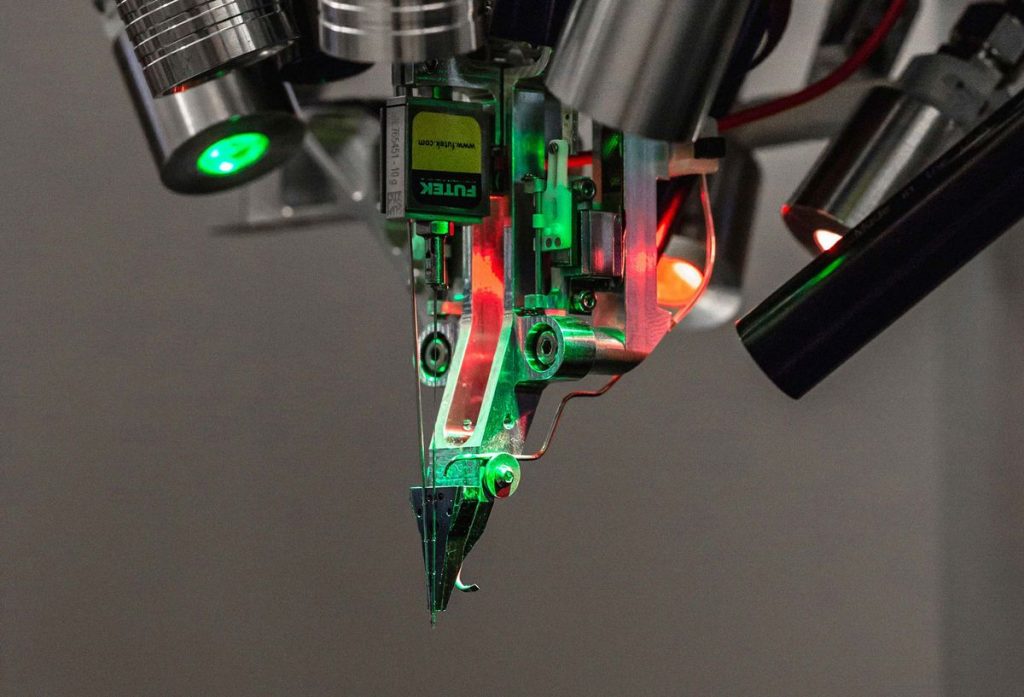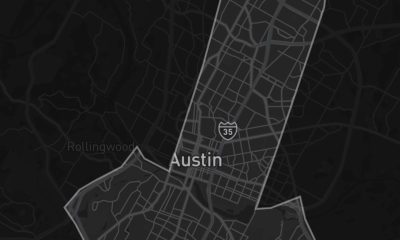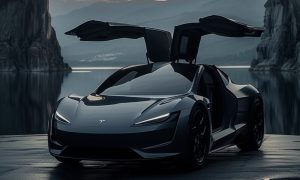

News
Elon Musk’s Neuralink targets human trials for brain-machine interface in 2020
After operating in stealth mode for the past two years, Neuralink, the brain-machine interface startup co-founded by SpaceX and Tesla CEO Elon Musk, has revealed some of the innovations that it has been developing. The company also announced that it is aiming to start implanting devices in humans by 2020, starting with paralyzed individuals who could then control phones or computers through their brain-machine implants.
Neuralink focused on two innovations on Tuesday’s presentation. The first involved flexible “threads” that are incredibly thin, measuring between 4 and 6 μm or about 1/3 the diameter of human hair. These threads are capable of transferring high volumes of data, with a white paper published by the company hinting at “as many as 3,072 electrodes per array distributed across 96 threads.” With the threads being incredibly thin, they would not damage the brain.
Another key technology revealed by Neuralink on its recent presentation was a custom made robot designed to embed implants into the brain. Thanks to computer vision and lenses, the robot will be able to place implants on patients without hitting or damaging blood vessels, reducing damage to the brain and scar tissue. Neuralink researcher Philip Sabes noted that “because these things are so thin and flexible, the idea is that they move with the tissue instead of tearing the tissue.”

Neuralink has performed at least 19 surgeries on animals with its robots, and so far, the machines have successfully placed the threads about 87% of the time. One of these subjects, a rather hefty rat that was shown off to the press, was fitted with a wired prototype of the company’s brain-machine interface. During the press demo, Sabes mentioned that the amount of data gathered from the rodent was about ten times greater than what is possible with today’s sensors.
In his presentation, Elon Musk stated that the evolution of Neuralink’s tech would be gradual, though he did mention that the company’s goal is a form of “symbiosis” with technology. “It’s not going to be suddenly Neuralink will have this neural lace and start taking over people’s brains. This is going to sound pretty weird, but ultimately, we will achieve symbiosis with artificial intelligence. This is not a mandatory thing. It is a thing you can choose to have if you want. This is something that I think will be really important on a civilization-level scale,” he remarked.
While the technologies shared by Neuralink on Tuesday seemed borderline science fiction, Neuralink president Max Hodak noted that similar innovations have actually been introduced and implemented in the past. “Neuralink didn’t come out of nowhere; there’s a long history of academic research here. We’re, in the greatest sense, building on the shoulders of giants,” he said. Nevertheless, Neuralink’s goal of directly reading neural spikes in a minimally-intrusive way remains notably ambitious.

The potential for such technologies is enormous. Implants such as BrainGate, which was developed initially at Brown University, were used in cases such as those of Matthew Nagle, who suffered from a spinal cord injury. Back in 2006, Nagle was able to learn how to use a computer using brain implants, at one point even playing Pong with his mind. In its presentation, Neuralink noted that its brain implants could be used for several individuals afflicted by Parkinson’s Disease, Dystonia, Epilepsy, OCD, Depression, Chronic Pain, and Tinnitus, among many.
Yet, despite its impressive innovations and its lofty goals, it should be noted that Neuralink is still a long way from achieving its targets. Dr. Matthew MacDougall, head surgeon at Neuralink, mentioned this while discussing how Neuralink implants could be as seamless as Lasik in the future. “There is a whole FDA process we have to go though. We haven’t done that yet,” he said.
So why the presentation? As noted by Elon Musk, Tuesday’s event is, at its core, an invitation for interested individuals who would like to work on the innovations that Neuralink is pursuing. With this open invitation, it would not be surprising if the company attracts an impressive number of talent in the near future. But now it’s time for you to vote. Will you be open to getting a brain-machine interface implant from Neuralink in the future?
News
Tesla launches in India with Model Y, showing pricing will be biggest challenge
Tesla finally got its Model Y launched in India, but it will surely come at a price for consumers.

Tesla has officially launched in India following years of delays, as it brought its Model Y to the market for the first time on Tuesday.
However, the launch showed that pricing is going to be its biggest challenge. The all-electric Model Y is priced significantly higher than in other major markets in which Tesla operates.
On Tuesday, Tesla’s Model Y went up for sale for 59,89,000 rupees for the Rear-Wheel Drive configuration, while the Long Range Rear-Wheel Drive was priced at 67,89,000.
This equates to $69,686 for the RWD and $78,994 for the Long Range RWD, a substantial markup compared to what these cars sell for in the United States.
🚨 Here’s the difference in price for the Tesla Model Y in the U.S. compared to India.
🚨 59,89,000 is $69,686
🚨 67,89,000 is $78,994 pic.twitter.com/7EUzyWLcED— TESLARATI (@Teslarati) July 15, 2025
Deliveries are currently scheduled for the third quarter, and it will be interesting to see how many units they can sell in the market at this price point.
The price includes tariffs and additional fees that are applied by the Indian government, which has aimed to work with foreign automakers to come to terms on lower duties that increase vehicle cost.
Tesla Model Y seen testing under wraps in India ahead of launch
There is a chance that these duties will be removed, which would create a more stable and affordable pricing model for Tesla in the future. President Trump and Indian Prime Minister Narendra Modi continue to iron out those details.
Maharashtra Chief Minister Devendra Fadnavis said to reporters outside the company’s new outlet in the region (via Reuters):
“In the future, we wish to see R&D and manufacturing done in India, and I am sure at an appropriate stage, Tesla will think about it.”
It appears to be eerily similar to the same “game of chicken” Tesla played with Indian government officials for the past few years. Tesla has always wanted to enter India, but was unable to do so due to these import duties.
India wanted Tesla to commit to building a Gigafactory in the country, but Tesla wanted to test demand first.
It seems this could be that demand test, and the duties are going to have a significant impact on what demand will actually be.
Elon Musk
Tesla ups Robotaxi fare price to another comical figure with service area expansion
Tesla upped its fare price for a Robotaxi ride from $4.20 to, you guessed it, $6.90.

Tesla has upped its fare price for the Robotaxi platform in Austin for the first time since its launch on June 22. The increase came on the same day that Tesla expanded its Service Area for the Robotaxi ride-hailing service, offering rides to a broader portion of the city.
The price is up from $4.20, a figure that many Tesla fans will find amusing, considering CEO Elon Musk has used that number, as well as ’69,’ as a light-hearted attempt at comedy over the past several years.
Musk confirmed yesterday that Tesla would up the price per ride from that $4.20 point to $6.90. Are we really surprised that is what the company decided on, as the expansion of the Service Area also took effect on Monday?
But the price is now a princely $6.90, as foretold in the prophecy 😂
— Elon Musk (@elonmusk) July 14, 2025
The Service Area expansion was also somewhat of a joke too, especially considering the shape of the new region where the driverless service can travel.
I wrote yesterday about how it might be funny, but in reality, it is more of a message to competitors that Tesla can expand in Austin wherever it wants at any time.
Tesla’s Robotaxi expansion wasn’t a joke, it was a warning to competitors
It was only a matter of time before the Robotaxi platform would subject riders to a higher, flat fee for a ride. This is primarily due to two reasons: the size of the access program is increasing, and, more importantly, the service area is expanding in size.
Tesla has already surpassed Waymo in Austin in terms of its service area, which is roughly five square miles larger. Waymo launched driverless rides to the public back in March, while Tesla’s just became available to a small group in June. Tesla has already expanded it, allowing new members to hail a ride from a driverless Model Y nearly every day.
The Robotaxi app is also becoming more robust as Tesla is adding new features with updates. It has already been updated on two occasions, with the most recent improvements being rolled out yesterday.
Tesla updates Robotaxi app with several big changes, including wider service area
News
Tesla Model Y and Model 3 dominate U.S. EV sales despite headwinds
Tesla’s two mainstream vehicles accounted for more than 40% of all EVs sold in the United States in Q2 2025.

Tesla’s Model Y and Model 3 remained the top-selling electric vehicles in the U.S. during Q2 2025, even as the broader EV market dipped 6.3% year-over-year.
The Model Y logged 86,120 units sold, followed by the Model 3 at 48,803. This means that Tesla’s two mainstream vehicles accounted for 43% of all EVs sold in the United States during the second quarter, as per data from Cox Automotive.
Tesla leads amid tax credit uncertainty and a tough first half
Tesla’s performance in Q2 is notable given a series of hurdles earlier in the year. The company temporarily paused Model Y deliveries in Q1 as it transitioned to the production of the new Model Y, and its retail presence was hit by protests and vandalism tied to political backlash against CEO Elon Musk. The fallout carried into Q2, yet Tesla’s two mass-market vehicles still outsold the next eight EVs combined.
Q2 marked just the third-ever YoY decline in quarterly EV sales, totaling 310,839 units. Electric vehicle sales, however, were still up 4.9% from Q1 and reached a record 607,089 units in the first half of 2025. Analysts also expect a surge in Q3 as buyers rush to qualify for federal EV tax credits before they expire on October 1, Cox Automotive noted in a post.
Legacy rivals gain ground, but Tesla holds its commanding lead
General Motors more than doubled its EV volume in the first half of 2025, selling over 78,000 units and boosting its EV market share to 12.9%. Chevrolet became the second-best-selling EV brand, pushing GM past Ford and Hyundai. Tesla, however, still retained a commanding 44.7% electric vehicle market share despite a 12% drop in in Q2 revenue, following a decline of almost 9% in Q1.
Incentives reached record highs in Q2, averaging 14.8% of transaction prices, roughly $8,500 per vehicle. As government support winds down, the used EV market is also gaining momentum, with over 100,000 used EVs sold in Q2.
Q2 2025 Kelley Blue Book EV Sales Report by Simon Alvarez on Scribd
-

 News3 days ago
News3 days agoTesla debuts hands-free Grok AI with update 2025.26: What you need to know
-

 Elon Musk1 week ago
Elon Musk1 week agoElon Musk confirms Grok 4 launch on July 9 with livestream event
-

 Elon Musk5 days ago
Elon Musk5 days agoxAI launches Grok 4 with new $300/month SuperGrok Heavy subscription
-

 News2 weeks ago
News2 weeks agoTesla Model 3 ranks as the safest new car in Europe for 2025, per Euro NCAP tests
-

 Elon Musk2 weeks ago
Elon Musk2 weeks agoxAI’s Memphis data center receives air permit despite community criticism
-

 News5 days ago
News5 days agoTesla begins Robotaxi certification push in Arizona: report
-

 Elon Musk2 weeks ago
Elon Musk2 weeks agoTesla reveals it is using AI to make factories more sustainable: here’s how
-

 Elon Musk2 weeks ago
Elon Musk2 weeks agoTesla scrambles after Musk sidekick exit, CEO takes over sales













